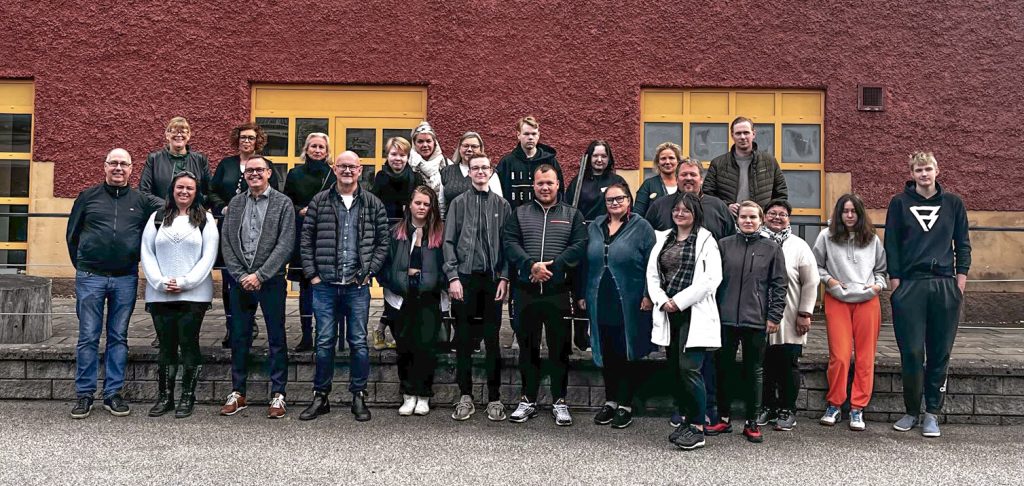
It´s sunday evening and a light rain falls over Borås when the guests from Estonia, Denmark and Finland arrived. They’ve come here, the teachers and students, to continue the journey to develop the sustainable kitchen within the project Green popup 4all.
– We all need to think about the footprint we leave on the earth, says project manager Pia Särkkä.
Borås is Sweden’s rainiest city, and it’s keept its promise. It was already raining when our visitors arrived on Sunday, and it continued for three days before the weather finally cleared up. But that didn’t stop us from a joint barbecue evening and some get-to-know-you activities.
However, the week would contain much more than charred sausages and hard-to-balance tennis balls. Considerably more time was spent on real cooking.
Cheese comes from milk
The local producer of primary products, as the farmer is called in our project, was the destination of Tuesday’s field trip. The participants had the opportunity to see how the Swedish cows lived and were milked. Like the farm Sörgården in Jällby.
Here, Linnea Hallén and Anna Johansson have approximately 100 cows. To manage the farm, they have the help of a robotic milking-machine that the cows go to, and a cleaning robot that keep the barn clean.
From the milk farm, it was a short journey to the dairy, where the cheese was produced. Gäsene dairy is a local producer owned by 24 local farms, all of which deliver their milk here. The dairy was founded as early as 1931 and over the years has steadily increased its production. Craftsmanship and well-thought-out storage together with a unique good bacterial culture create the cheese that has been awarded several times, most recently at the Cheese Festival 2022. 8 cheese makers and a few more are here to make the cheese. The cheese they produce is then sold in shops, most within a 25-mile radius of Gäsene.
– I think many people will be a little surprised when they notice what storage does to the taste, says Marcus Jansson, CEO of Gäsene Mejeri.
Autumn was the theme
With the insight into how the local ingredients were grown and created, it was time to move on to the menu. The theme was autumn and to complicate the whole thing a bit more, the students were required to make menus that must contain the autumnal ingredients like root vegetables and apples as well as dairy products (from Gäsene and Kråkarp’s dairies) and pork.
– They have received four ingredients that are local, partly cheese from Gäsene dairy, partly grilled cheese from Kråkarp’s dairy, carré, root vegetables and apples. Then they also get to practice communicating and exchanging ideas about green and sustainable food, says Anki Holst.
The students were well prepared. The four groups, but one participant from each country, had already previously met online to prepare the menus. Once in place, it remained to try to create them according to the ideas they came up with. Much was simple, but how do you create smoked cheese net if you don’t have a smokehouse? The last was something that a group spent a lot of time on and finally succeeded with good results.
The evaluation makes us better
We also learned about what we can improve on.
Before the workshop students and teachers met online. Personal meeting is more important than we want to admit. But is import for all participants to develop digital skills based on the project plan. But we agreed on one thing, and that was that it would make it easier if you talked about one thing at each meeting. Sustainability one time, the business idea the other and so on. Then it will be easier for everyone to follow along. For the students who rarely traveled so much, they also wanted at least a few hours of opportunity to see the city they visited. To once in a lifetime be able to come to Slagelse or Borås and sometime in five days have time to stroll around the center was a wish that they send with them to the next city.
Now we pass the baton to Estonia, where the next pop-up will take place.
